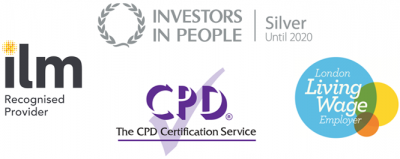May
04
2017
Managing change successfully
By David Goodman.
Research indicates that over 70% of change fails within 18 months of it being introduced. The reason given is a lack of understanding of the importance of bringing people on board during all stages of change. The mechanics of change is not complicated. Trouble arises primarily because the soft stuff is really the hard stuff and it needs a clear understanding of people’s motivations and drives for change to succeed.
1. First considerations
If you have successfully identified your target for change, take a helicopter view of your team, department or organisation. As Heifetz suggests ‘get off the dance floor and onto the balcony’. Take time to consider how change in one Department may affect another. How will the removal or addition of a member of staff affect team dynamics? What impact will the cutting of budgets have?
2. Why?
There has to be an easily understood need to change. What are the reasons for change? What could happen if we don’t change? The risks of doing nothing must outweigh the risks of doing something. It is rare that we have the luxury of behaving as the Normans did in 1066. On arriving at the shores of England, they burned their boats giving them only one possible alternative, to move forward and conquer. In simplistic terms, make sure that where you are going is more appealing to your team than where you are coming from.
3. What
What is your vision? Be clear to yourself and be totally honest. It will do you no good to be challenged in a meeting about your vision and not to be able to respond with confidence and determination. Focus on presenting your vision in such a way as for it to be attractive to all stakeholders.
4. Capacity
What resources will you need? Consider what it will take to move from A to B. Does the company already have the resources to support the change or if the change to be seen as an investment for the future, can funds be set aside?
5. Risk
All change carries with it risk. What risks are you taking? Don’t expect to evaluate all aspects of risk alone. It is during this stage that you need to consult. The purpose is not to build obstacles but to plan effectively for the challenges which will arise and they will. A SWOT analysis can be very helpful. |As the saying goes; ‘Plan and some things will be unexpected. Without planning everything is unexpected’.
6. Communication
Communication is king! Be aware of your stakeholders and keep them informed every step of the way. In this way you won’t create any unnecessary enemies. You may even gain yourself friends who will see themselves as partners.
7. Find reasons to celebrate
We live in a world of instant gratification. Everyone wants to know that they are backing a winner. Seek out early wins, early signs of success. This will bring the doubters and those sitting on the fence on board.
David Goodman has over 25 years' experience as a coach, consultant and trainer focusing on enhancing performance and productivity with individuals, teams and organisations. David specialises in the Management Ladder, creating strong leadership at all levels.


